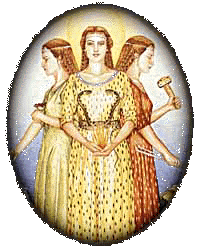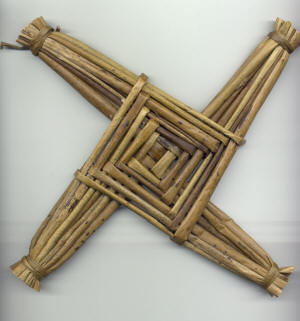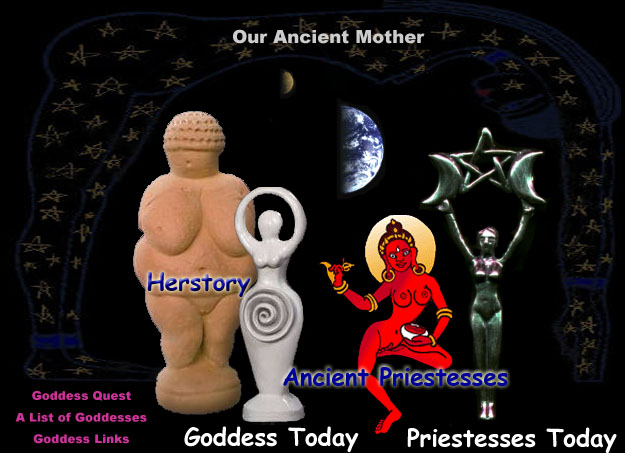Brigid,
Brigit, Bridgit
The Great Triple Goddess of the Celtic Irish

"To the Celts the Goddess of Healing was Brigit, The Bright One, who was in charge of water and fire. An aspect of Brigit's benevolence is present at all Sacred Springs as the Guardian of the Healing Waters and keeper of the Flame."
Bridget
is the best example of the survival of a Goddess into Christian
records. So cherished by the Celts, Her image was dedicated by the
Catholic church as St. Bridget and various myths were made. The most
popular folk tale being that She was midwife to the Virgin Mary, and
thus was always invoked and prayed to by women in labor. Another
story tells that she was the daughter of a Druid who predicted the
coming of Christianity and was baptized.
The Goddess Brigit had
always kept a shrine at Kildare, Ireland, with a Perpetual Flame
tended by nineteen Virgin Priestesses called Daughters of the Flame.
No male was ever allowed to come near it; nor did those women ever
consort with men. Even their food and other supplies were brought to
them by women of the nearby village. When Catholicism took over in
Ireland, the Shrine became a Convent and the virgin Priestesses
became Nuns but the same traditions were held and the Eternal Flame
was kept burning. Their tradition was that each day a
different Priestess/Nun was in charge of the Sacred Fire and on the
20th day of each cycle, the fire was miraculously tended by Brigit
Herself. For over a thousand years, the Sacred Flame was
tended by Nuns, and no one knows how long before that it had been
tended by the Priestesses.
In 1220 AD, a Bishop became angered by the no-males policy of the
Abbey of St. Brigit of Kildare. He insisted that nuns were
subordinate to priests and therefore must open their Abbey and
submit themselves to inspection by a Priest. When they refused and
asked for another Abbess or other female official to perform any
inspections, the Bishop was incensed. He admonished them to
obedience and then decreed that the keeping of the Eternal Flame was
a Pagan custom and ordered the Sacred Flame to be extinguished.
In the 1960's, under Vatican II modernization, it was declared that there was insufficient proof of Brigit's sanctity or even of her historical existence, and so the Church's gradual dismissal of Brigit was successful at last and She was thus de-Canonized.
Clearly, Brigit is the
most loved Goddess of the British Isles. Her fire so bright that she
survived mass spiritual transformation and lives on today watching
over her children all over the world. Her festival, Imbolc, is
celebrated February first or second, representing the coming of
spring. Fires are lit at sundown and feasts are shared with the
Bright One.
- Who is Brighid

- Bridgit Goddess of saints.
- The Goddess Bridget
- The Goddess Bridgit
- The Lady Brigid
- The Triple Goddess
- St. Brigid's Cross
- Lady of the Depths: Primal Goddess of Celtic Shamanism
Activity:
Make a Brigid's cross to hang over your door for Candle mass Feb1st -2nd (midway between winter solstice and spring equinox, marks beginning of spring)
This page last updated: 03/01/2018
